Five scientific discoveries made with Google Earth
- Transfer
Thanks to satellite photographs of the entire surface of the Earth, scientists were given the opportunity to explore territories where it had never occurred to anyone to send scientific expeditions, as well as to take a new look at long-studied places. Over the past few years, Google Earth has made a number of important discoveries. Sometimes these discoveries are made by completely random people.
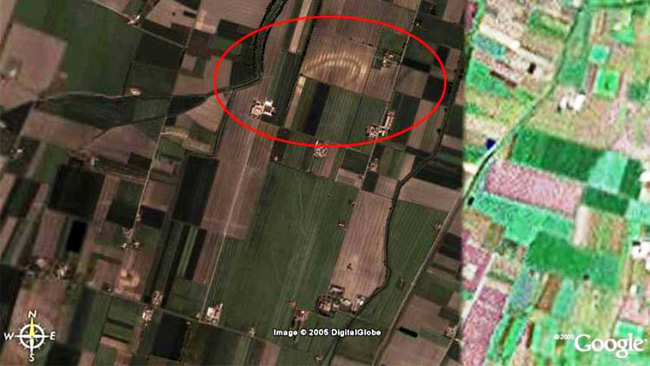
Luca Mori mistook him for a computer glitch, but still informed the specialists of the National Archaeological Museum who organized the expedition. Immediately after the excavation began, they discovered ancient ceramics and the remains of an ancient Roman villa built before our era.
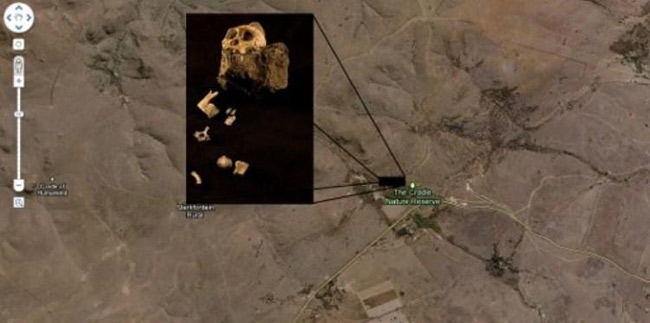
Brave paleoanthropologist Lee Berger set off on a brave exploration of South Africa, launching Google Earth in the comfort of his office. The professor began to explore the area of limestone caves in South Africa, which is known to scientists as the Cradle of mankind .
Berger found in satellite imagery previously unknown caves suitable for the life of ancient people. In 2008, he organized a semi-amateur expedition, taking with him only one student, as well as a son and a dog. On the spot, they found fifty of the alleged places of residence of Australopithecus (higher primates, bipedal hominids with a small brain volume).
Having visited one of the caves, the father sent his 9-year-old son to look around, and after 15 minutes he brought a stone with perfectly preserved fossilized fragments of the clavicle and lower jaw. Excavations at the site also revealed other fragments of the skeletons of a woman and a teenager, whose age is estimated at 1.78-1.95 million years.
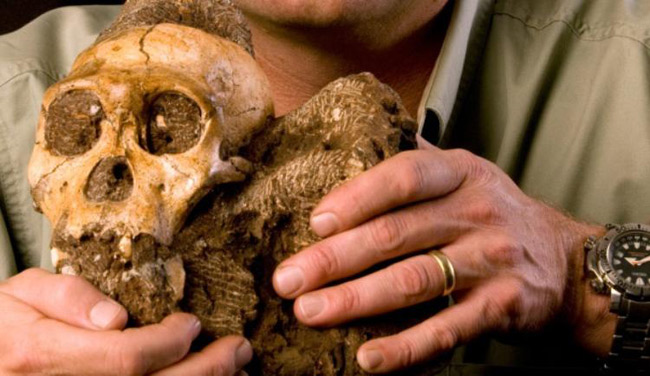
The importance of this discovery is that the samples found belong to a new, previously unknown species of Australopithecus, very similar to humans. It was two million years ago that the higher primates began to walk on two legs, use tools and form the beginnings of speech. A new species was called Australopithecus sediba (Australopithecus sediba). Perhaps this particular species is the ancestor of Skillful Man, that is, a transitional link from ape-like hominids to people of a modern kind.
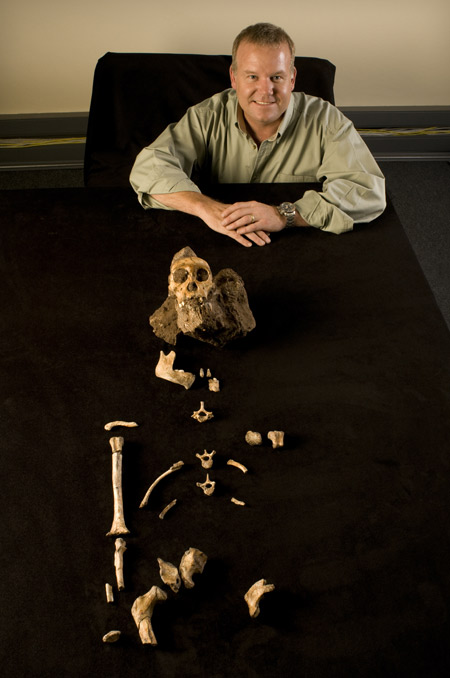
Lee Berger and fragments of a skeleton belonging to the species Australopithecus sediba.

In satellite photographs of northern Mozambique, an English scientist, Julian Bayliss, discovered a completely unknown “oasis” - an isolated tropical forest located high in the mountains in an inaccessible place. It turned out that this forest is known to locals, but a scientific expedition has never been equipped there. But such isolated territories are extremely interesting for biologists, because new species of animals and plants are often found there. Mount Mabu did not disappoint - in 2008 an expedition was sent there, the results of which are still being studied. In total, more than a hundred (!) New species were discovered - plants, birds, butterflies, monkeys, snakes - in just three weeks. This rainforest is jokingly called Google Forest.
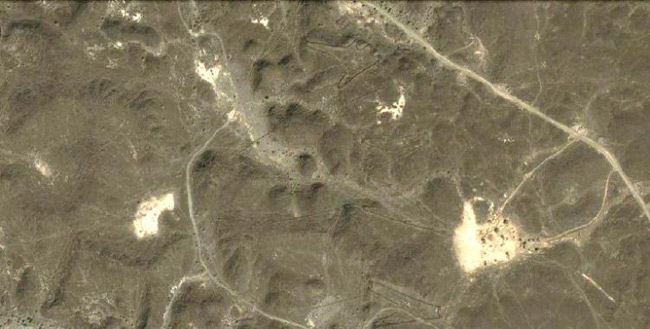
Like the wilds of Mozambique, the deserts of Saudi Arabia are extremely unfriendly to explorers and travelers. In early 2011, Australian scientist David Kennedy decided it would be easier to first look around the area with satellite imagery than to look for something in the sand. Studying the desert meter by meter bore fruit - more than 2,000 places were discovered where something is visible. These coordinates were listed, and a study on the spot made it possible to discover several thousand different artifacts of ancient civilization - stone wheels, bird traps, strange-shaped tombs, and much more. Artifacts scattered across a vast territory from Syria to Yemen are over 9,000 years old.
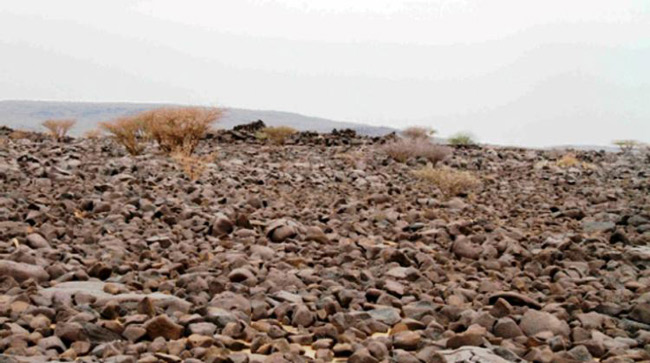
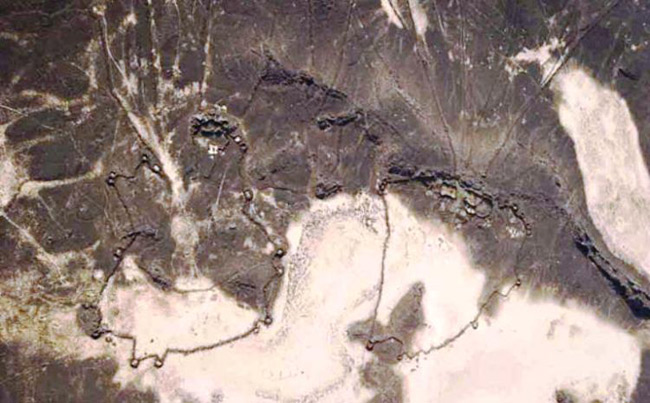
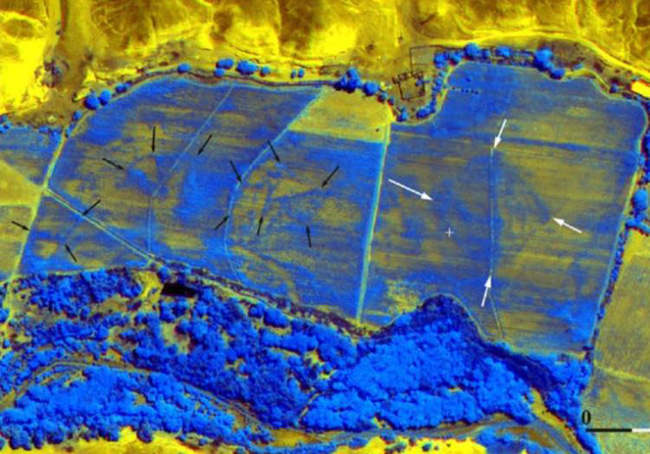
The pyramids were found under a field of wheat, a kilometer from the famous Nazca geoglyphs - groups of giant geometric figures, each a hundred meters in size (triangles, spirals, bird, monkey, spider, flowers). These geoglyphs were noticed only in the 20th century, when an airplane flew over them. Due to its gigantic size, drawings cannot be viewed from the ground.
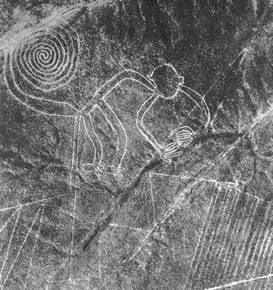
Remains of an ancient Roman villa, Italy, 2005
One of the very first archaeological discoveries made at Google Earth took place in 2005. Ironically, the author of the discovery, a local resident Luca Mori, launched the program simply to explore the area near his native Parma. Quite unexpectedly, he noticed some strange oval artifact in the fields near the city.
Luca Mori mistook him for a computer glitch, but still informed the specialists of the National Archaeological Museum who organized the expedition. Immediately after the excavation began, they discovered ancient ceramics and the remains of an ancient Roman villa built before our era.
Australopithecus sediba, 2 million years old, South Africa, 2008

Brave paleoanthropologist Lee Berger set off on a brave exploration of South Africa, launching Google Earth in the comfort of his office. The professor began to explore the area of limestone caves in South Africa, which is known to scientists as the Cradle of mankind .
Berger found in satellite imagery previously unknown caves suitable for the life of ancient people. In 2008, he organized a semi-amateur expedition, taking with him only one student, as well as a son and a dog. On the spot, they found fifty of the alleged places of residence of Australopithecus (higher primates, bipedal hominids with a small brain volume).
Having visited one of the caves, the father sent his 9-year-old son to look around, and after 15 minutes he brought a stone with perfectly preserved fossilized fragments of the clavicle and lower jaw. Excavations at the site also revealed other fragments of the skeletons of a woman and a teenager, whose age is estimated at 1.78-1.95 million years.

The importance of this discovery is that the samples found belong to a new, previously unknown species of Australopithecus, very similar to humans. It was two million years ago that the higher primates began to walk on two legs, use tools and form the beginnings of speech. A new species was called Australopithecus sediba (Australopithecus sediba). Perhaps this particular species is the ancestor of Skillful Man, that is, a transitional link from ape-like hominids to people of a modern kind.

Lee Berger and fragments of a skeleton belonging to the species Australopithecus sediba.
Mabu Rainforest, Mozambique, 2008

In satellite photographs of northern Mozambique, an English scientist, Julian Bayliss, discovered a completely unknown “oasis” - an isolated tropical forest located high in the mountains in an inaccessible place. It turned out that this forest is known to locals, but a scientific expedition has never been equipped there. But such isolated territories are extremely interesting for biologists, because new species of animals and plants are often found there. Mount Mabu did not disappoint - in 2008 an expedition was sent there, the results of which are still being studied. In total, more than a hundred (!) New species were discovered - plants, birds, butterflies, monkeys, snakes - in just three weeks. This rainforest is jokingly called Google Forest.
Stone Artifacts, Saudi Arabia, 2011

Like the wilds of Mozambique, the deserts of Saudi Arabia are extremely unfriendly to explorers and travelers. In early 2011, Australian scientist David Kennedy decided it would be easier to first look around the area with satellite imagery than to look for something in the sand. Studying the desert meter by meter bore fruit - more than 2,000 places were discovered where something is visible. These coordinates were listed, and a study on the spot made it possible to discover several thousand different artifacts of ancient civilization - stone wheels, bird traps, strange-shaped tombs, and much more. Artifacts scattered across a vast territory from Syria to Yemen are over 9,000 years old.


Ancient Pyramids, Peru, 2008
In 2008, scientists were able to discover a large number of ancient pyramids under a soil layer in the desert of Peru, combining Google Earth images with infrared photography.
The pyramids were found under a field of wheat, a kilometer from the famous Nazca geoglyphs - groups of giant geometric figures, each a hundred meters in size (triangles, spirals, bird, monkey, spider, flowers). These geoglyphs were noticed only in the 20th century, when an airplane flew over them. Due to its gigantic size, drawings cannot be viewed from the ground.

